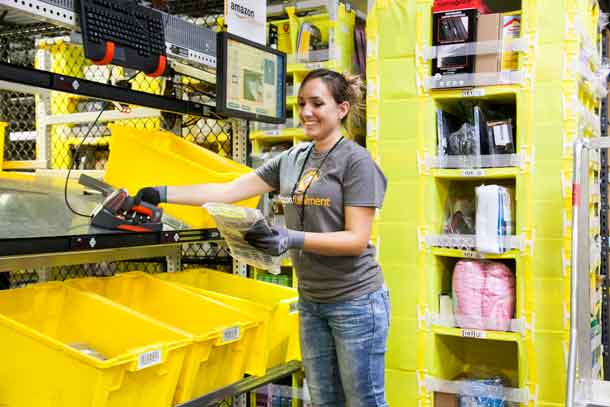With scientists warning the Amazon is nearing a tipping point, Indigenous peoples want a concrete plan to save their home from deforestation and violence tied to supply chains
- Scientists warn that the Amazon is close to a tipping point
- Global warming could see parts of rainforest turn into savannah
- Growing recognition of indigenous role in conserving forest
By Dan Collyns
LIMA – (Thomson Reuters Foundation) – Indigenous representatives from all nine Amazon Basin countries, gathered in the Peruvian capital Lima this week, pressed world leaders to adopt a global pact to protect 80% of the Amazon forest by 2025.
The call comes as the world’s largest tropical rainforest – a key weapon in the fight against climate change due to its role in storing carbon – edges ever closer to a tipping point beyond which it might never recover, scientists have warned.
The plan for an “80×25” pact will be presented to governments at November’s U.N. COP27 climate conference in Egypt and the U.N. biodiversity summit in Montreal in December.
Deforestation in the Amazon surged to unprecedented levels last year, alongside violent attacks on the local communities crucial to preventing the environmental destruction driving climate change, biodiversity loss and pandemic risk.
In new research released this week, scientists and the world’s largest indigenous organisation found that Brazil and Bolivia are home to 90% of total deforestation and degradation in the Amazon region.
Parts of those two countries, which lie in the southeast of the biome, have already passed a point at which the rainforest starts to turn into savannah – a grassy ecosystem with clusters of trees – due to deforestation, soil degradation and intensive farming, they added.
“The tipping point is already happening in some areas of the Amazon,” warned Alicia Guzmán, an Ecuadorean scientist who worked on the report, titled “Amazonia: Against the Clock”.
She noted that 74% of the Amazon requires immediate protection, while a further 6% could be restored to achieve the 80% conservation goal by mid-decade.
“But this is the last call before all the region reaches a tipping point,” she told the Thomson Reuters Foundation.
The study, by the Amazonian Network of Georeferenced Socio-environmental Information (RAISG), advocacy group Stand.earth and the Coordinator of Indigenous Organizations of the Amazon Basin (COICA), found that two small South American countries – Suriname and French Guiana – have some of the best-preserved tropical forest.
COICA is the world’s largest indigenous organisation representing Amazon peoples in Brazil, Peru, Ecuador, Colombia, Bolivia, Venezuela, French Guiana, Guyana and Suriname.
‘OUR HOME’
Guzmán said safeguarding the Amazon “cannot be done without the indigenous people – they hold the knowledge”.
“For once we have to follow their lead,” she said, adding that they would need funding and other support at an international level to be able to play their full part.
The new analysis builds on a growing body of evidence – backed by scientists who have worked on flagship U.N. reports on climate change and biodiversity – that recognising and enforcing land rights for indigenous peoples, and valuing their expertise and governance systems, are vital for nature conservation.
“If indigenous peoples’ knowledge is not taken into account, the Amazon will unfortunately reach a point of no return,” said Gregorio Mirabal, the outgoing president of COICA, which represents more than 500 Amazonian indigenous nations covering 237 million hectares of the Amazon Basin.
The Amazon holds 20% of the world’s drinking water and about 10% of its biodiversity “that can still be saved”, said Mirabal, a member of Venezuela’s Kurripako people.
“Besides that, it is our home – it is our home that is being polluted, that is being burned, that is being used for illicit activities (and) criminal economies, that is being used to extract natural resources that do not benefit our communities,” he added in an interview.
The report presents ways to avoid the “point of no return” – from recognising 100 million hectares of indigenous lands, to moratoriums to protect intact ecosystems, shared governance, and the conditional cancellation of the debts of Amazon nations.
DEFENDER DEATHS
The 80×25 goal was unanimously approved by climate experts and governments last year at a congress of the International Union for Conservation of Nature (IUCN) in France, as a measure to stop irreversible damage to the Amazon and its ecosystems.
The Fifth Amazon Summit of Indigenous Peoples in Lima, which ends on Friday, paid homage to the native Amazonians murdered in recent years following a brutal rise in violence and land invasions by illegal miners, loggers and drug-traffickers.
In 2020, there were 202 murders of human rights defenders in countries in the Amazon basin, across Colombia, Brazil, Peru and Bolivia, according to COICA.
In the same year, Global Witness registered 227 killings of environmental defenders in Latin America and the Caribbean.
“In Brazil, we are living through a catastrophe,” said Nara Baré, a former leader of the Coordinator of Indigenous Organizations from the Brazilian Amazon (COIAB).
“It is a time when – through misgovernment – every minute there is an indigenous defender, defending his territory, defending his life, being killed.”
The spread of illegal gold mining is a growing threat, she noted, particularly in protected areas and indigenous territory.
She urged international policies to tighten supervision of global supply chains of commodities like soy, gold and beef, which are root causes of deforestation.
“If you live in a consumerist society, you are responsible for these problems – you also have a duty to be with us, seeking solutions,” Baré added.
Despite the weakening of environmental policies in Brazil under far-right President Jair Bolsonaro, indigenous people are being elected to more government posts at a regional and state level, she noted.
Oil is another major threat, with oil blocks covering 9.4% of the Amazon’s surface, 43% of which are in protected areas and indigenous territory, the report said.
More than half of the Ecuadorian Amazon is designated as an oil block, said the report, adding that the roughly 30% shares allocated in Peru, Bolivia and Colombia are also worrying.
Mirabal said Russia’s invasion of Ukraine was driving global demand for oil from the Amazon.
But it is the farming industry that accounts for 84% of Amazonian deforestation, the report found, with land invasions as well as fires directly related to the expansion of the agricultural frontier.
There are solutions to save the world’s largest carbon sink – but they must be implemented urgently, Mirabal said.
“Every second, trees are being cut down,” he added. “We need technical and financial support because we cannot defend the Amazon alone.”
(Reporting by Dan Collyns; editing by Megan Rowling @meganrowling. Credit: Thomson Reuters Foundation)



